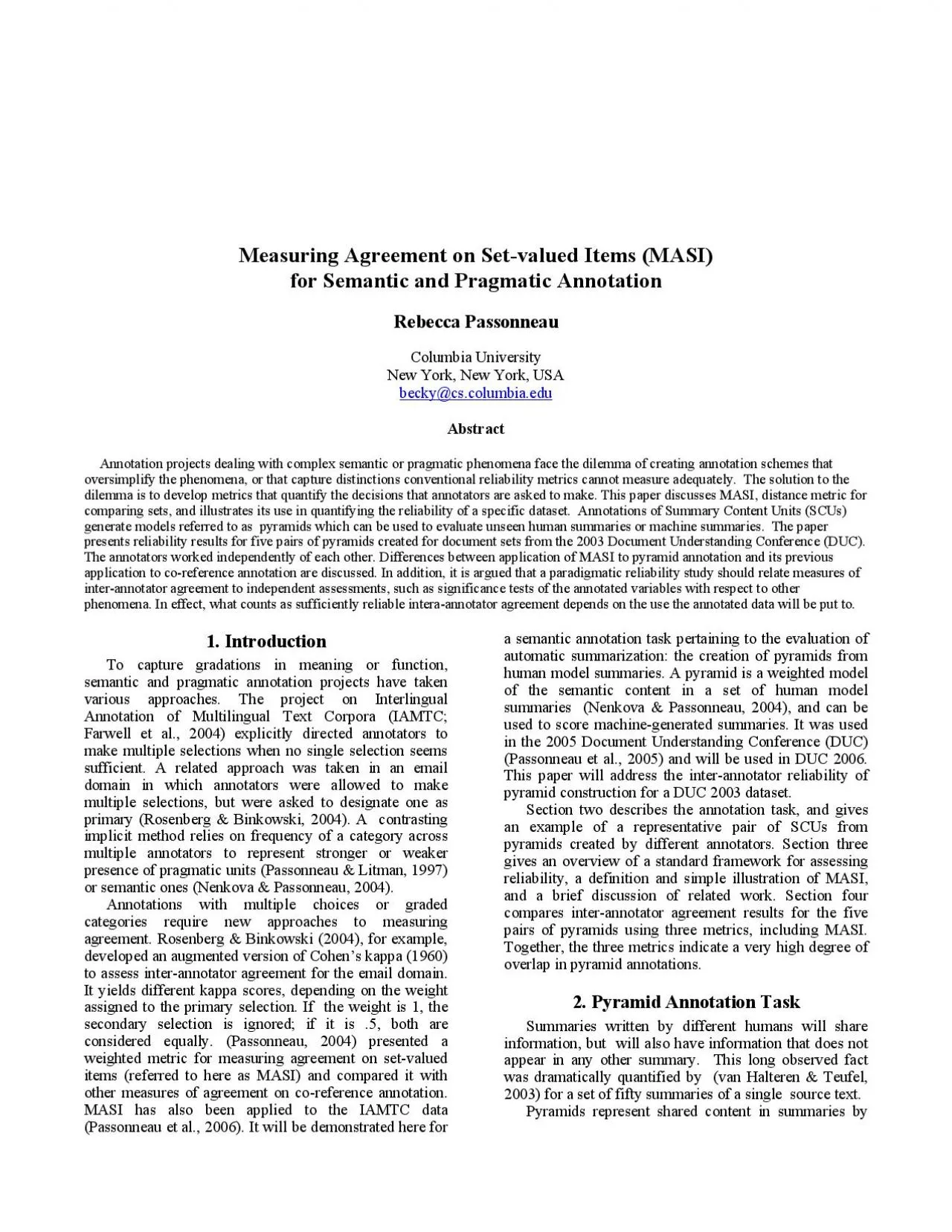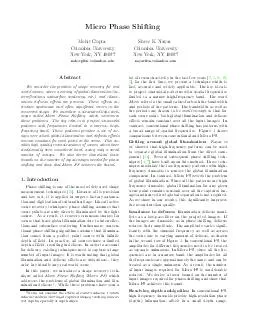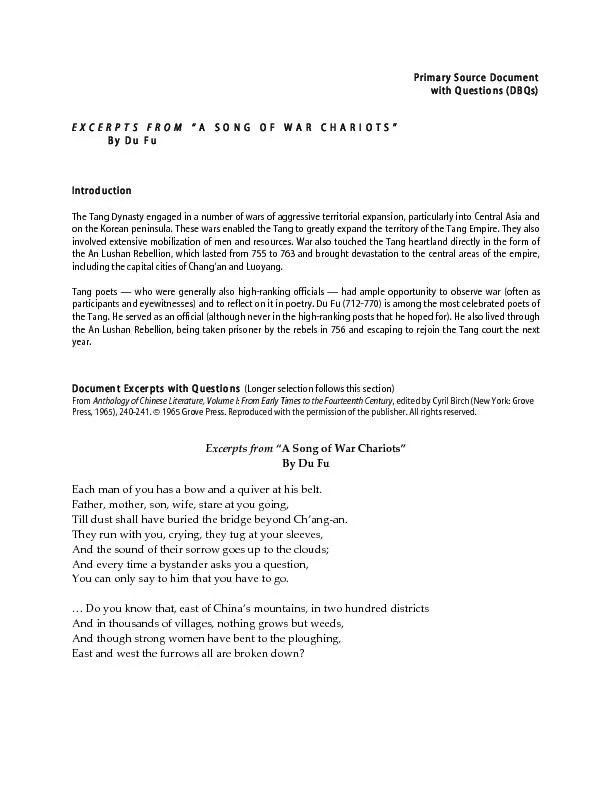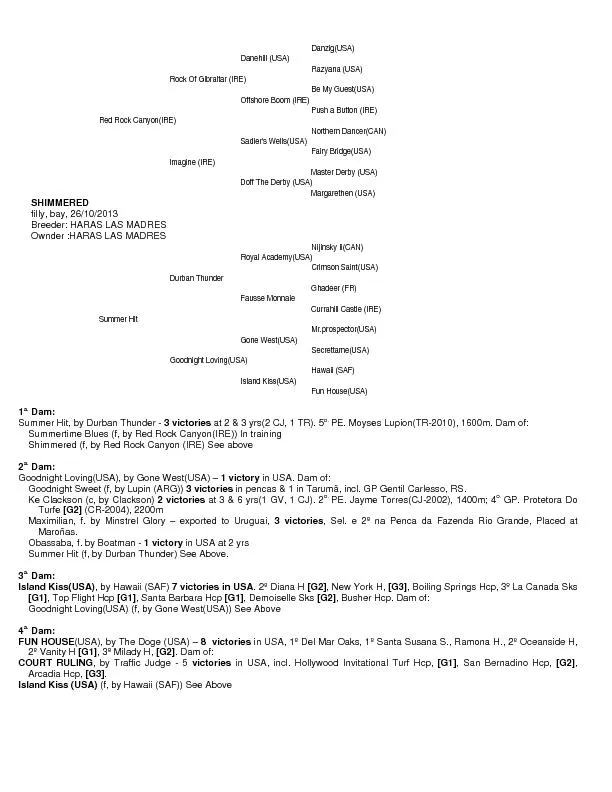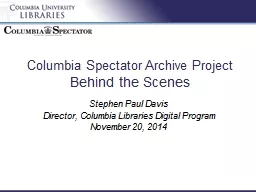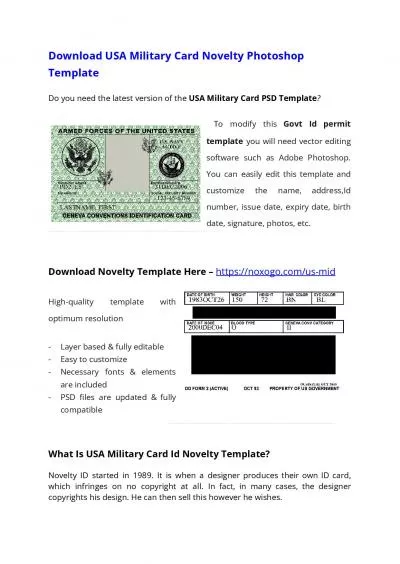PDF-Columbia University New York New York USA beckycscolumbiaedu
Author : lauren | Published Date : 2021-08-31
Abstract Annotation projects dealing with complex semantic or pragmatic phenomena face the dilemma of creating annotation schemes that oversimplify the phenomena
Presentation Embed Code
Download Presentation
Download Presentation The PPT/PDF document "Columbia University New York New York US..." is the property of its rightful owner. Permission is granted to download and print the materials on this website for personal, non-commercial use only, and to display it on your personal computer provided you do not modify the materials and that you retain all copyright notices contained in the materials. By downloading content from our website, you accept the terms of this agreement.
Columbia University New York New York USA beckycscolumbiaedu: Transcript
Download Rules Of Document
"Columbia University New York New York USA beckycscolumbiaedu"The content belongs to its owner. You may download and print it for personal use, without modification, and keep all copyright notices. By downloading, you agree to these terms.
Related Documents

